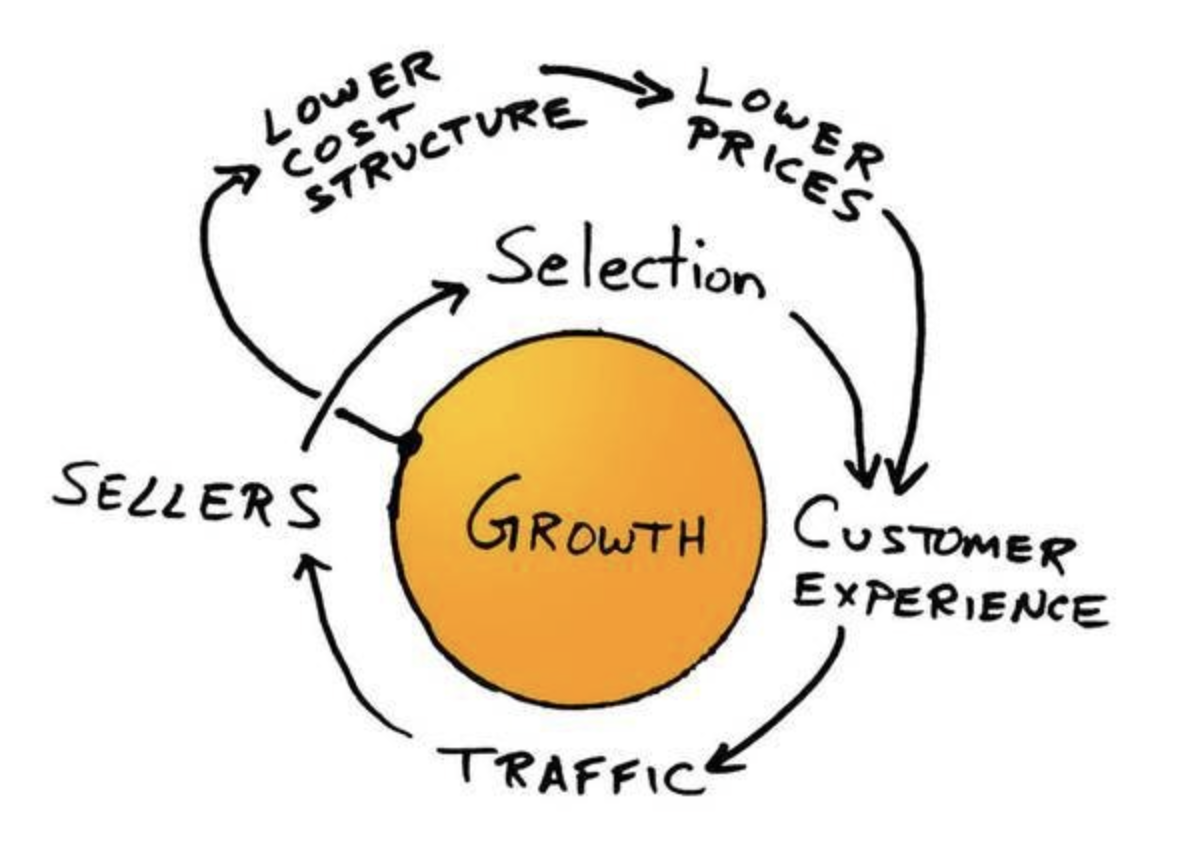BUSINESS STRATEGY
Crafting and implementing clear, effective and forward-looking business strategies

What is Business Strategy?
A Business strategy is a set of key decisions and initiatives that allow the business to beat its competitors and acquire and retain new customers. It involves identifying your winning aspiration, field of play, competitive strategy and the capabilities and systems required to put that strategy into place.
As Peter Drucker, the author of Competitive Strategy and renowned strategy guru, says, it is about ‘deliberately choosing a different set of activities to deliver unique value’. All thinking about strategy in business starts with a simple question: why do companies such as Google Alphabet, Amazon, Apple and Facebook dominate their respective markets and competitors? What is their ‘secret sauce’? The truth is that all these businesses have one thing in common: a clear, decisive and organisation-wide strategy which makes the hard choices necessary to ensure they deliver unique value to their customers and can thus outcompete their competitors and dominate their markets.

Why you need a Business Strategy
Business strategy is critical – if done well, it works like a compass for the business, helping it focus on what really matters to achieve. It will prioritise the allocation of time, effort and resources on activities that create the most value to them, and ensure that the organisation is aligned behind a common vision. Businesses with a clear and high quality strategy won’t be as easily distracted by projects, products, trends and market activities that don’t add value to their customers
By ensuring the strategy is deployed and integrated organisation-wide, it will ensure that different divisions and segments of the organisation do not duplicate their efforts or engage in conflicting actions. This becomes particularly importan Just as with a compass, businesses without cohesive and clear business strategy will find themselves unable to make progress or improve, and will be outcompeted by competitors who have set out concrete business strategies.
Why Strategy Needs to Align to Customers
In recent years, strategy definition has evolved from being a very company-centric exercise (inside out strategy) to becoming a customer-centric one (outside in strategy). The key reasons for this radical shift has been the rise of digital mediums as the dominant platform for consumers. Through smartphones, tablets, laptops and the other parts of the vast array of the digital ecosystem, customers have access to an almost infinite source of information on companies’ products, services and actions. If knowledge is power, the rise of the well-informed digital consumer has shifted power away from companies and towards customers.
This shift in power between organisations and customers has made it essential for organisations to put their customers at the centre of all key decisions. As competition has increased, and leading organisations continue to place growing emphasis on customers, vaguely knowing your customers and what they like (usually through quantitative statistical data) is simply not enough to win in the marketplace.
Businesses need to acquire an intimate, in-depth understanding of their customers in order to develop their competitive advantage. Only by using the right combination of both quantitative (surveys, polls, marketing and CRM data, etc.) and qualitative research (ethnography, interviews, intercepts, co-design sessions, etc.) can organisations acquire the insight into their customers which is required to develop customer-centric business strategy. However, if properly explored, that in-depth knowledge can be leveraged to create products and services that significantly improve the lives of their customers.
How to plan a Business Strategy
There are 5 key elements to consider in order to build and effective business strategy – each of these five elements reinforce each other and need to be tested and re-assessed on a regular basis, through market and customer feedback. Indeed, according to Roger Martin’s landmark strategy book ‘Playing to Win’, crafting a winning strategy needs to be treated as an iterative process of continual development and adoption, in which all the elements influence one another and must be taken into account together.
1. Winning Aspiration
The winning aspiration is a statement which captures the core strategic purpose of your organisation. A winning aspiration should focus on two key components:
- Explaining how the business really improves the lives of its customers (as explained by Peter Thiel in his book ‘Zero to One’, each product should be 10x times better than the competition for customers)
- Articulating how the business positions itself against its competitors, either through cost leadership or differentiation.
A good example of a brilliantly successful winning aspiration is that of Amazon, whose winning aspiration is ‘‘to be Earth’s most customer-centric company, where customers can find and discover anything they might want to buy online, and endeavours to offer its customers the lowest possible prices’.
2. Where We Will Play
The question ‘Where will we play?’ is one of the most critical a business needs to answer when defining its strategy, as it sets the field and scope for the organisation and it’s strategy. If, as we recommend, you make use of the Business Model Canvas, this step requires you to consider and populate the following sections:
- Customer Segments: Who are your most important customers and clients today and into the future?
- Customer Relationships: What type of relationship does each segment require? What relationships do we currently have with them, and what do we need to achieve?
- Channels: What channels do our customer segments want to be reached through? How are we currently reaching them? Which channels should we be using?
- Partnerships: Who are our key partners? What resources are we acquiring from them, or what activities do they perform? What value do we provide to them, and what value do they provide to us?
3. How Will We Win
This step is all about answering the core question ‘How will we win?’. To do so, you need to define two key things:
First, the business’s unique value proposition for its customers: Defining the customer value proposition requires you to look at the end-to-end customer journey and experience to identify their pain points, delight points and jobs to be done – CX Journey mapping is a useful and powerful tool for that purpose.
Second, your competitive strategy, which conventionally comes in one of (or a combination of) three key strategem:

Cost Leadership
The first strategy is called ‘Cost Leadership’: this strategy is usually chosen by established market leaders who can leverage their size to create economies of scale that will drive their costs down. Think about large supermarket retailers such as Coles or Woolworths: they use their size and duopoly position to dictate their terms to much smaller providers in very advantageous multi-year purchasing agreements. Those lower costs can be used either to improve operating margins, or to reduce prices to attract price-conscious customers and gain market shares.

Differentiation
The second strategy is ‘Differentiation’: this strategy is focusing on the value of the product or service provided. It is about creating a uniquely desirable product that will delight target customers. This strategy requires to invest not only in product features and design, but also in the overall customer experience. Think about a luxury company like Hermes: not only their bags reflect exceptional craftsmanship, but also the entire purchasing experience has been designed to make each customer feel special and valued.

Focus
And finally, the third strategy is called ‘Focus’: this strategy is also called ‘niche’ strategy. It is about serving a very specific customer segment with a product or service that has been entirely designed for their unique needs. This strategy requires that businesses build strong brand loyalty amongst customers in order to make their market segment less attractive to potential competitors. Think about a company like Mad Paws that targets pet owners in metro areas and provides them with daytime and overnight pet care services.
This element includes considering the following sections: of the business Model Canvas:
- Value Proposition: What customer problems are you solving and how? What value are you creating for them?
- Cost Structure: What are the different costs in your business model? How do they compare to your competitors?
- Revenue Streams: What are your different revenue streams? How much do they contribute to your total revenue?
4. What Key Capabilities Do We Need
This element looks at the key business functions which allow the organisation to deliver its value proposition (the value chain). These functions can be within or across different departments and segments of the business, for example, ‘commercialisation of new products’, as a key capability for a FMCG business, will typically sit across R&D, Marketing and Sales department, despite being the same key capability. If filling out the Business Model Canvas, this step will involve filling out the ‘key activities’ section.
5. What Processes, Systems & Data Support These Capabilities
This element requires a wholistic assessment of the resources required to support the capabilities of the business. This includes:
- Processes: the series of tasks and activities performed by employees to deliver on the company’s value chain
- Systems and tools: the software, hardware and tools used by the company employees, online and offline, to perform their jobs
- Data: the information available to inform employee’s decisions and actions throughout the business
If using the business model canvas, this will fill out the ‘Key Resources’ section.
Brilliant Business Strategy Example: Amazon
Why is Amazon’s strategy such a great example, and source of inspiration, for other businesses? The main reason is that they understand what it takes to win in their market. Their success is built on serving the customer, and the customer only. For that, Amazon has consciously focused its efforts on the three core elements of value that their customers wanted. Having set these values as strategic focuses, they have innovated and developed almost obsessively to deliver on each.
1. The largest selection of items

2. The cheapest price

3. The fastest delivery
Those three elements are the foundations of what defines the customer experience at Amazon, and lie at the heart of Amazon’s strategy. If you carefully examine Amazon’s operation, you will see that almost every step they take contributes to one of these three core elements of value – their strategy permeates their organisation in both action and culture.
his excellent customer experience is the starting point of the Amazon growth engine, as illustrated by the famous ‘Amazon Flywheel’ (see graph beside):
A great experience attracts customers to their website; they will return to it and recommend it to their family and friends. In turn, the traffic generated attracts sellers who want to have their products in front of as many people as possible. As a result, more sellers means a broader selection that reinforces the customer proposition, and it also means the ability to get better deals with sellers and thus lower prices for customers. The improved experience in turn drives higher traffic, and the cycle continues, creating the incredibly successful company we see today.

Implementing a Business Strategy: 4 Key Steps

1. Testing and Experimentation
Once the first version of the strategy has been defined, a common mistake is to assume that this strategy is final, and fundamentally correct, simply because it has been agreed on by the experts and decision-makers in the room (namely the c-suite and their business unit leads). However, this could not be further from the truth: many businesses realise too late that their beautiful strategy does not reflect how their customers and the market respond to it (e.g. Nokia). We believe that large, established companies should conduct experiments and test their strategy, just like start-ups do, to make sure it is truly delivering the expected value. In essence, successful implementation of a business strategy requires the business to adopt a more scientific approach.
You should start by identifying the most critical and riskiest assumptions supporting their strategy, usually they are:
- Who the customers are (problem/solution validation)
- What the value proposition is (product/market fit)
- What the revenue model is (scalable & sustainable model)
You should then develop an in-market experiment aiming to prove or disprove those fundamental assumptions underpinning the strategy. These experiments don’t necessarily have to be time or resource-consuming, they merely need to be capable of testing the key assumption. Indeed, thanks to a new generation of free digital tools, it is now possible to test something in market very quickly and for a neglectable cost (e.g. Milkshake websites for testing a new product value proposition). The insights generated by the experiments will usually prove extremely valuable for the business and will help it to adjust its initial strategy, if the experiments reveal that the assumptions were either incorrect or require adjustment.

2. Developing an implementation roadmap
Once the strategy has been validated through a series of experiments, the next question for the business is: how do we get to our strategic destination? At this stage, the company needs to run a detailed gap analysis by comparing:
- Existing capabilities vs. capabilities needed (as per the key capabilities of the strategy), and
- Existing resources vs. resources needed (processes, systems & data in the strategy)
The outcome of this analysis will allow to identify what key capabilities and resources the business needs to set up in order to be able to deliver on its new strategy. Due to limits in available budget and manpower, businesses will then need to assess and prioritise these new capabilities and resources to decide which ones will be developed or acquired first. This sequencing in the deployment of the new capabilities and resources is called the strategy implementation roadmap, and is critical to successfully implementing the strategy.

3. Accountability – tools, tracking etc
Accountability is essential to successfully implementing any strategy: roadmaps are plans, and plans are useless without people to carefully manage, track and review them on an ongoing basis. The three key features to ensure that the plan will move ahead and roll out its initiatives are:
- Clear accountability for each initiative, including potentially using a responsibility assignment matrix such as RACI.
- Realistic deadlines to avoid burning the teams working on initiatives and keep high level of engagement as they perceive the tasks as achievable
- Transparency: the roadmap needs to be accessible and visible from all parties involved in its delivery. This often involves the use of online platforms such as Tability to track goals and implementation.

4. Review and Adapt
The final step of successfully implementing a business strategy is to revise and update the strategy and implementation roadmap on a regular basis. The roadmap will require more frequent review to ensure flexibility and account for rapid change in context and ability to deliver on plans – quarterly is good practice. Whereas the strategy should not require revision more often than annually: a business needs some level of stability and focus to be able to deliver on its objectives and performance indicators.
Innovation Strategy Insights
Navigating The Great Resignation in Australia: Why Purpose Is the Key
Learn about the 'Great Resignation' in Australia, and why focusing on employee purpose is the key to navigating the Great Resignation.
Read More
Emerge into innovation – not business as usual
Your understanding of how to innovate will be the point of differentiation that will set your business up to trump the competition as we learn ...
Read More
‘Never waste a good crisis’ – strategic insights in the evolution of digital healthcare
The pandemic has been an opportunity to extend an arm into industries that have been behind in the digital space. We explore the strategic insights ...
Read More
Chat-bots: The Intersection of Digital Disruption and Customer Experience
Chat-bots are an almost ubiquitous part of digital strategy - learn about what is needed for them to improve rather than detract from customer experience.
Read More
Digital Transformation Failures, and How we can learn from them
What the meteorite was to dinosaurs, a poorly executed digital transformation is to a CEO. Find out why a human-centred design approach is critical in ...
Read More
Digital Transformation – What we can learn from the UK’s COVID-19 Response
Find out why the UK's rapidly built Nightingale Hospital COVID response is yet another example of failed digital transformation
Read More
Why The Strategy Group should be your strategy partner
We will work with you to design and support implementation of a strategy for your business unit, for your entire organisation, or for any segment of your organisation where a fresh approach will add value.
We will use a combination of globally-recognised leading-edge processes, coupled with our proprietary validated toolbox to develop a bespoke, customised strategy, which we can assist you in implementing, that will deliver tangible impact and value to your organisation, employees and customers.
We have been designing and implementing strategy solutions since 2003 and we have the expertise and the experience not only to deliver, but to overdeliver.











